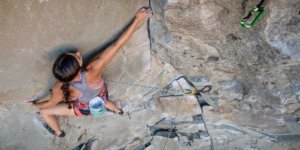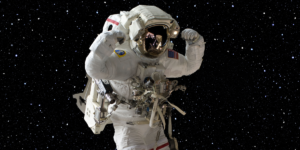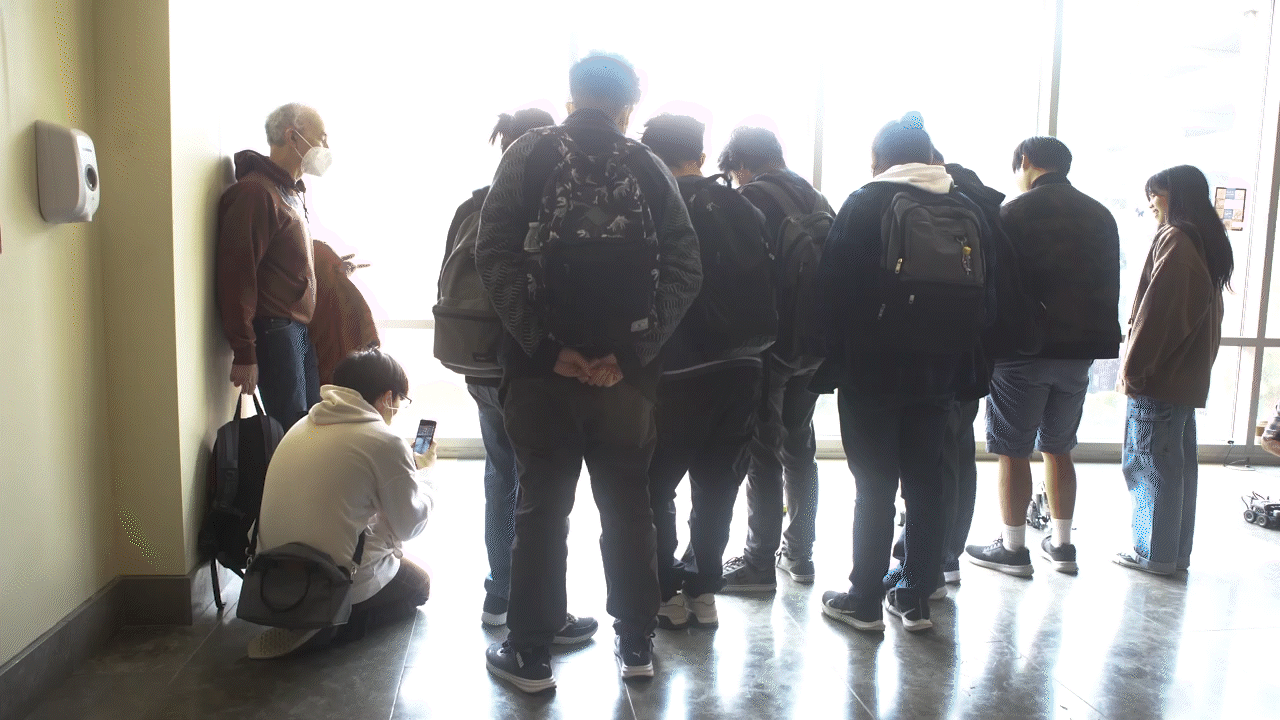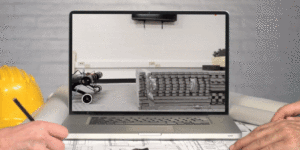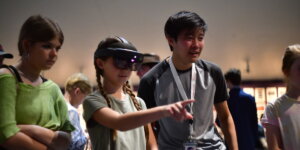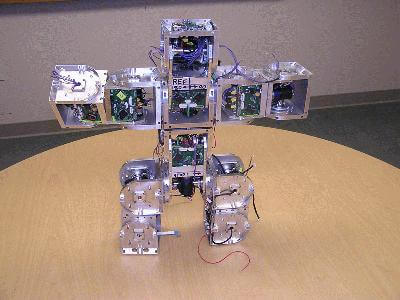
SuperBot stands.
On February 13, ISI’s Wei-Min Shen reported to NASA significant progress in developing “SuperBot,” identical modular units that plug into each other to create robots that can stand, crawl, wiggle and even roll, illustrating his comments with striking video of the system in action.
Shen’s presentation took place at the Space Technology and Applications International Forum 2007 (STAIF) held in Albuquerque, New Mexico.For the report, he first offered a description of the SuperBot work:
“Superbot consists of Lego-like but autonomous robotic modules that can reconfigure into different systems for different tasks. Examples of configurable systems include rolling tracks or wheels (for efficient travel), spiders or centipedes (for climbing), snakes (for burrowing in ground), long arms (for inspection and repair in space), and devices that can fly in micro-gravity environment.

“Each module is a complete robotic system and has a power supply, micro- controllers, sensors, communication, three degrees of freedom, and six connecting faces (front, back, left, right, up and down) to dynamically connect to other modules.
“This design allows flexible bending, docking, and continuous rotation. A single module can move forward, back, left, right, flip-over, and rotate as a wheel. Modules can communication with each other for totally distributed control and can support arbitrary module reshuffling during their operation.
“They have both internal and external sensors for monitoring self status and environmental parameters. They can form arbitrary configurations (graphs) and can control these configurations for different functionality such as locomotion, manipulation, and self-repair.”
Shen illustrated his words with SuperBot action video showing these processes.
He and his colleagues and students made the fillms in just one week, immediately after completing the mechanics and electronics hardware for the latest batch of SuperBot modules at the beginning of February.
“The fact that SuperBot can achieve so much in so short a time demonstrates the unique value of modular, multifunctional and self-reconfigurable robots,” Shen said.
The SuperBot team includes PhD students Harris Chiu, Jacob Everest, Feili Hou, Nadeesha Ranasinghe, and Mike Rubenstein; MS students Nick Kiswanto and Peter Shin; and Computer Scientists Mark Moll and Behnam Salemi.
Follow the links below to view .wmv files of some of the videos:
Rope climbing between buildings:
Finally: what does the world look like from a SuperBot POV?
Shen holds a research appointment in the USC Viterbi School of Engineering department of computer science in addition to his post as an ISI project leader and director of the ISI Polymorphic Robotics Laboratory.
Shen has been developing modular robots for six years, working with NASA (his current funder) and others.
Published on February 13th, 2007
Last updated on August 6th, 2021






